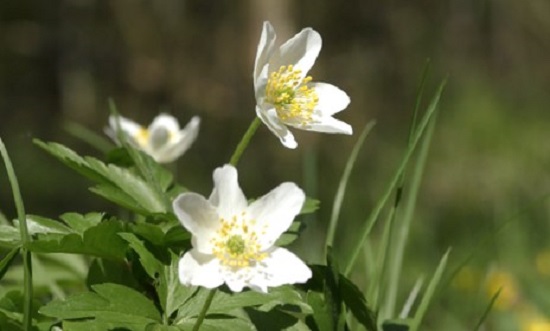Morphological dormancy
Morphological dormancy is a type of dormancy linked to the development of the seed. It prevents germination because the embryo is under-developed, even after the seed has dispersed from the mother plant. After natural dispersal, the embryo still needs a period of time to develop before it is able to germinate.
Case study: wood anemone

In European woodlands between March and May, the star-shaped flowers of wood anemone, Anemonoides nemorosa, emerge among the leaf litter of ancient forests. Wood anemone is of conservation interest in the United Kingdom, and its seeds are conserved at the Millennium Seed Bank at Wakehurst, part of the Royal Botanic Gardens, Kew. However, when these seeds were retrieved from storage, germination was poor.
A team of scientists at Kew suggested that the low germination rates could be the result of morphological dormancy. The seeds of Anemonoides nemorosa are immature at the point of natural release: could this make them unable to survive a period of desiccation in storage? When the scientists buried the seed-bearing fruits in the leaf litter of their native woodland habitats, or left them to develop under laboratory conditions prior to storage, this allowed time for the embryos to develop from globular, to heart-shaped, to torpedo-shaped embryos, as Figure 8 (below) shows. This intervention improved germination rates after storage significantly.
Physiological dormancy
